In the ever-evolving world of interior design, the floating vanity has emerged as a must-have element for modern bathrooms, transforming spaces with its sleek and versatile appearance. Whether you’re taking your first steps into the world of home decoration or you’re a seasoned enthusiast seeking fresh inspiration, the floating vanity offers a perfect blend of functionality and aesthetics that can enhance any bathroom’s ambiance.
By incorporating a floating vanity, you can create the illusion of more space, introducing a sense of airiness and elegance without compromising on practicality. This article will guide you through various design options, from minimalist to luxurious, helping you discover the perfect style that complements your unique taste and bathroom layout.
As we delve into the nuances of floating vanity designs, you’ll find actionable tips on selecting the right materials, finishes, and fixtures that ensure longevity and style. Whether you’re aiming for a spa-like sanctuary or a chic urban retreat, this guide will empower you with the knowledge to make informed decisions that transform your bathroom into a personalized haven.
Understanding Floating Vanity Basics
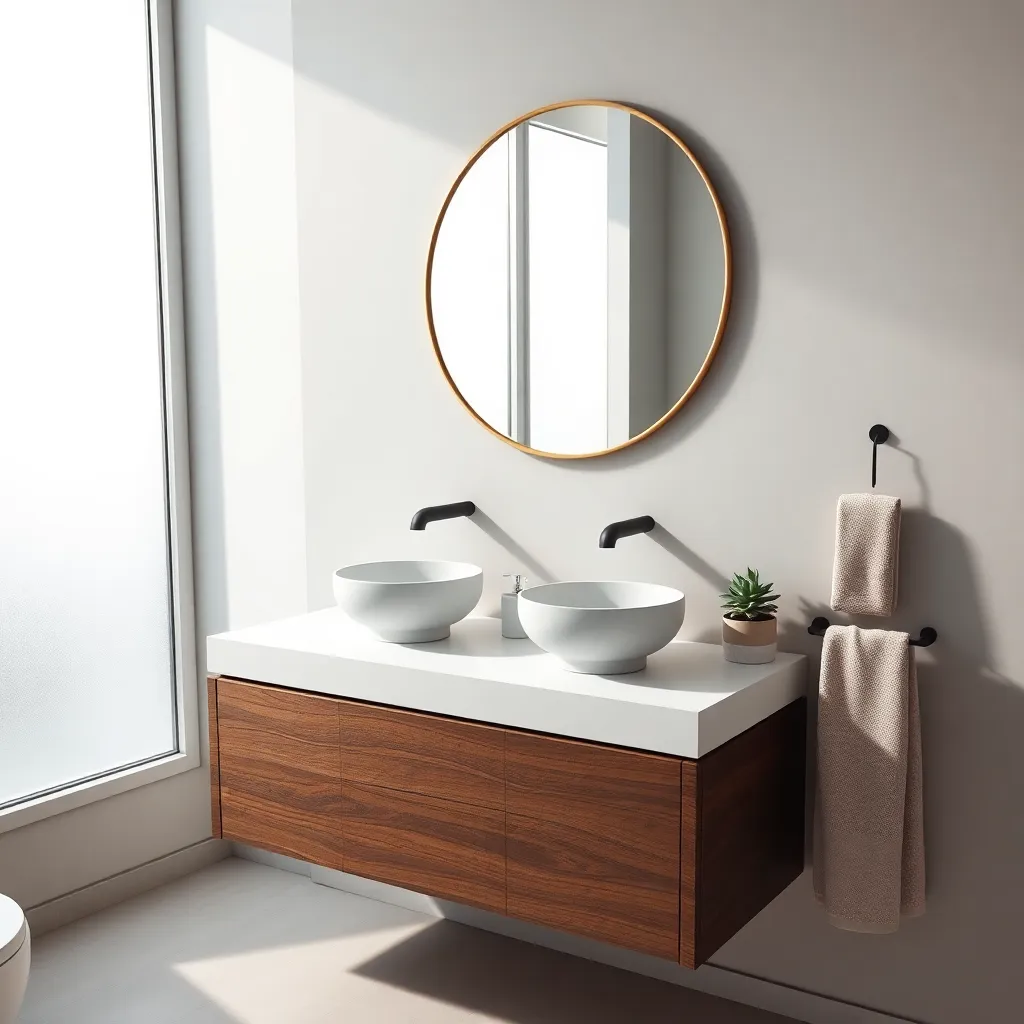
Floating vanities offer a modern, sleek look that can instantly elevate the style of any bathroom. They are mounted to the wall, creating the illusion of more space and making them an excellent choice for small bathrooms.
When selecting materials for your floating vanity, consider options like solid wood or engineered wood for durability and aesthetic appeal. For a contemporary vibe, opt for a high-gloss finish or a minimalist matte look.
Placement is key to maximizing both functionality and aesthetics with a floating vanity. Ensure the vanity is securely attached to the wall studs to support its weight and consider the height—typically, a height of 32 to 36 inches from the floor is ideal for comfort and accessibility.
Color schemes can significantly impact the overall feel of your bathroom. Neutral palettes like whites, grays, or soft pastels can create a serene atmosphere, while a bold color like navy or forest green can make a striking statement when paired with brass or matte black fixtures.
Choosing Materials for Durability
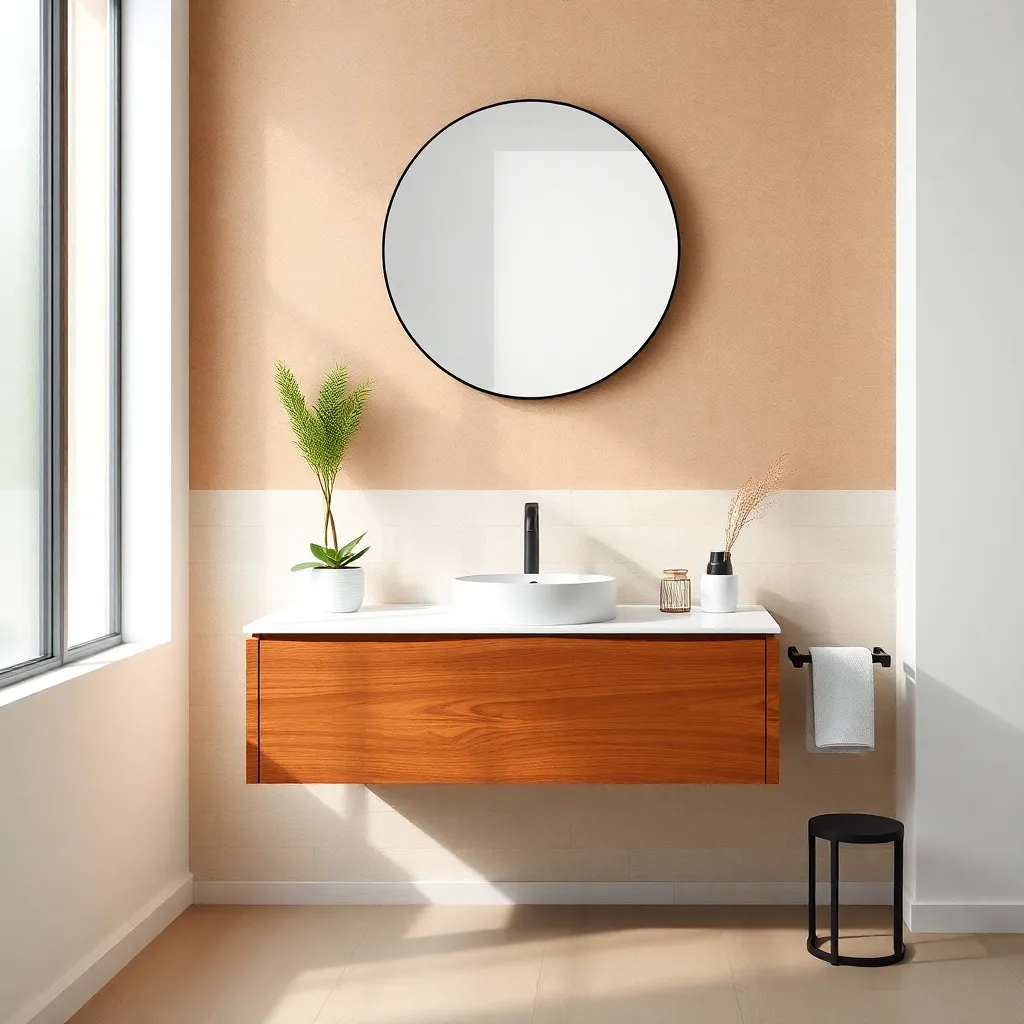
When selecting materials for a floating vanity, it’s crucial to prioritize durability to ensure the longevity of your investment. Opt for materials like solid wood or plywood, as these offer both strength and resistance to moisture, a common challenge in bathroom environments.
Consider incorporating engineered wood veneers for a balance between aesthetics and resilience, providing a sleek finish that can withstand daily wear. For countertops, materials such as quartz or granite are excellent choices due to their non-porous nature and ability to resist stains and scratches.
High-quality laminates are also a viable option for budget-conscious decorators, offering durability with a variety of styles to mimic more expensive finishes. Ensure that hardware, such as hinges and drawer slides, is made from stainless steel or brass to prevent rust and ensure smooth operation over time.
To further extend the life of your floating vanity, consider water-resistant sealants on wood surfaces to protect against humidity. Keeping the vanity off the floor not only enhances the modern aesthetic but also aids in maintaining cleanliness and preventing water damage.
Maximizing Space with Sleek Designs
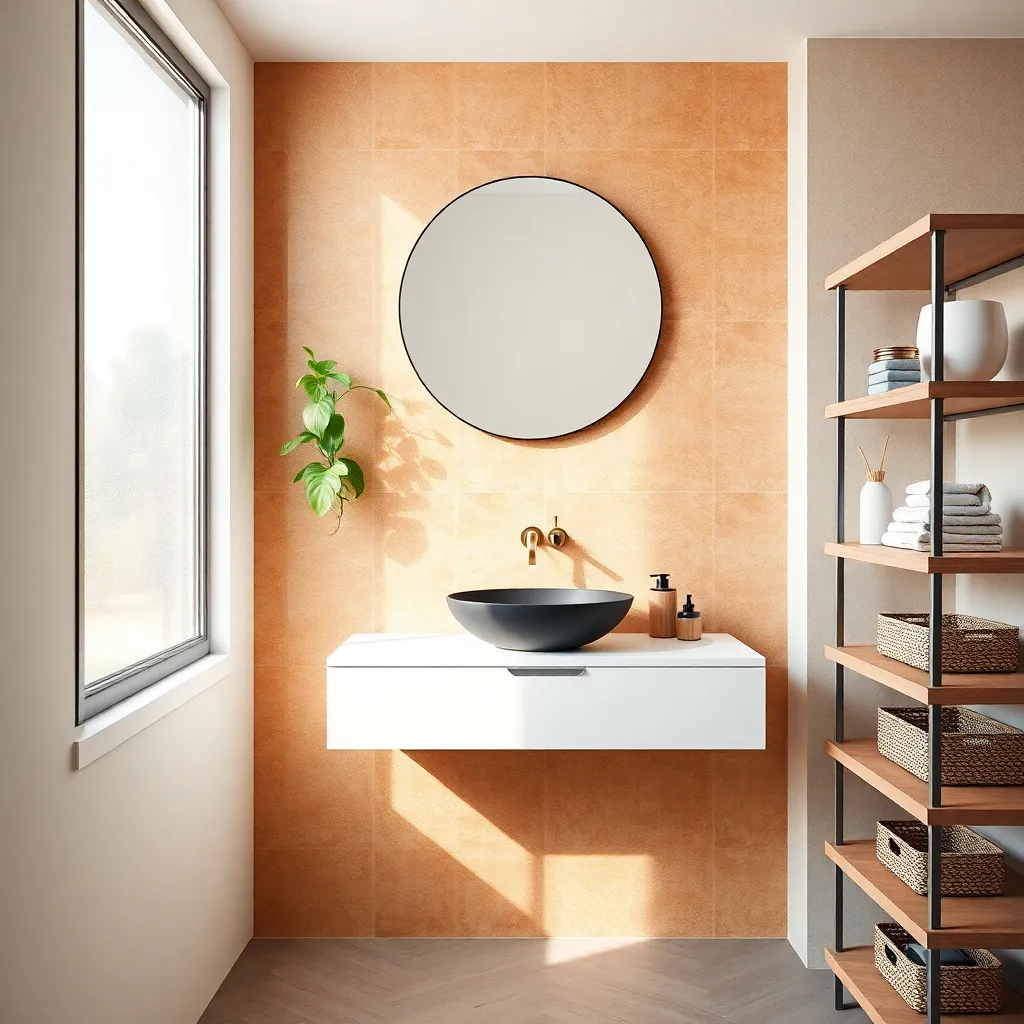
Floating vanities are a clever way to maximize space while maintaining a sleek and modern aesthetic. By mounting the vanity off the floor, you create a sense of openness and make the room feel larger, which is especially beneficial in small bathrooms.
For those looking to optimize space even further, select a vanity with built-in storage solutions. Opt for models with drawers or shelves underneath the sink to keep your essentials organized without cluttering the countertop.
When choosing a color scheme, consider using light, neutral tones to enhance the airy feel of a floating design. White, soft grays, or light wood finishes reflect light better, complementing the floating effect and making the room feel more expansive.
Placement is key to achieving the best results with a floating vanity. Ensure the vanity is positioned at a comfortable height, typically around 32 to 36 inches from the floor, to maintain both functionality and style.
Enhancing Aesthetics with Lighting
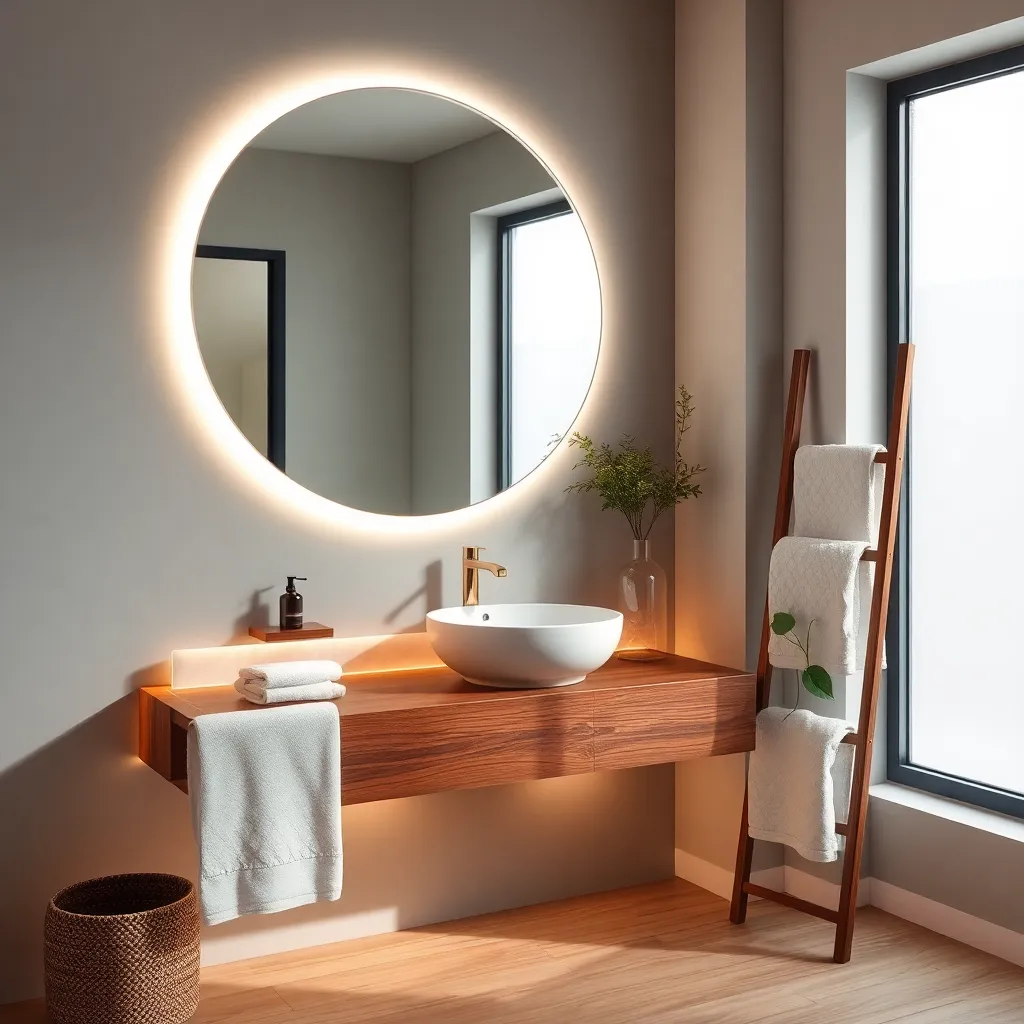
Lighting plays a crucial role in elevating the aesthetics of your floating vanity, transforming it from a functional piece to a stunning focal point. Consider installing LED strip lights beneath the vanity to create a floating illusion, enhancing both depth and drama in your bathroom space.
For those looking to add a touch of sophistication, installing pendant lights above the vanity can make a significant impact. Opt for pendants with dimmable features, allowing you to adjust the ambiance from bright and energizing to soft and relaxing.
Reflective surfaces can amplify the effect of your chosen lighting, making your vanity area feel larger and more luxurious. Position a large mirror with a beveled or backlit frame above the vanity to bounce light around the room and add a layer of elegance.
To achieve a cohesive look, match the color temperature of your vanity lighting to the rest of your bathroom. A consistent lighting scheme not only creates a harmonious atmosphere but also highlights the vanity’s design elements, such as its sleek lines or unique materials.
Installation Tips for Seamless Fit
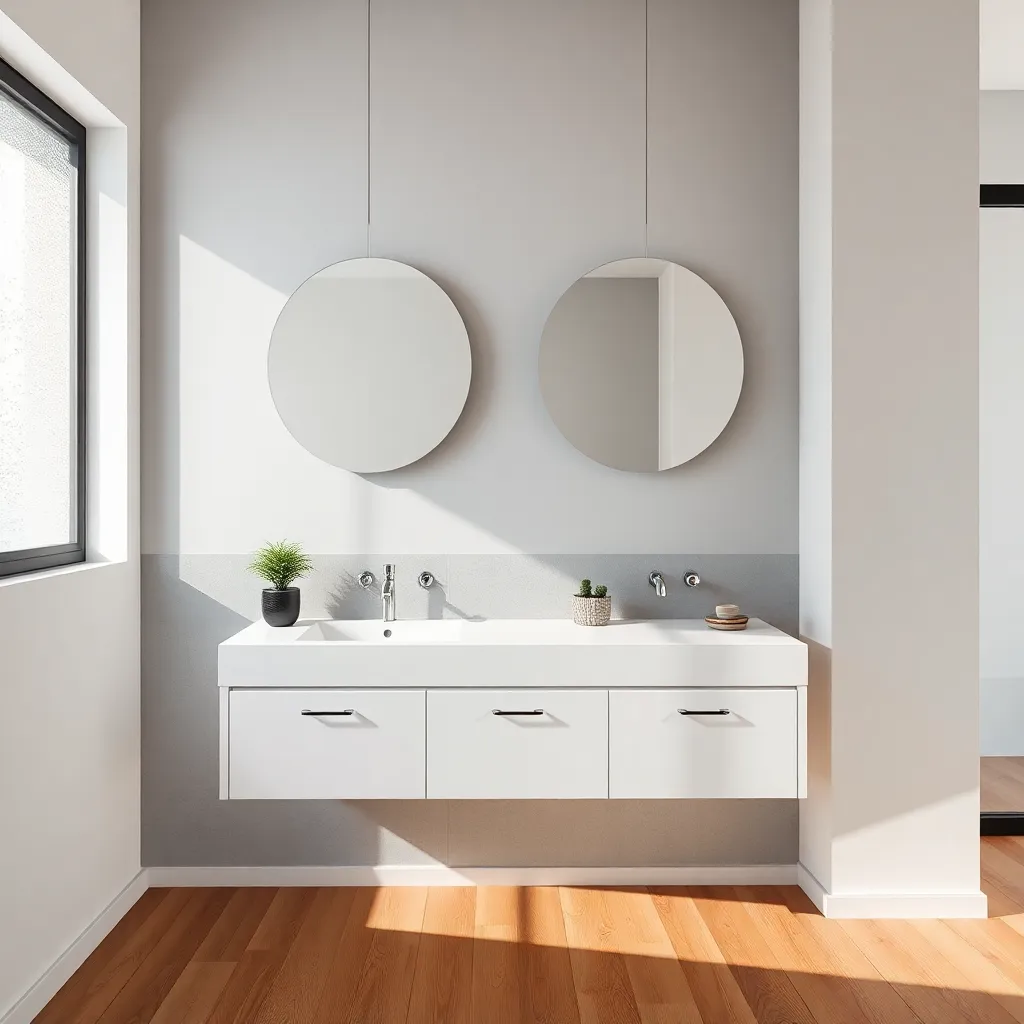
To achieve a seamless fit for your floating vanity, start by ensuring the wall structure can support the weight. Reinforce the wall with additional studs or brackets if necessary, especially in older homes where support might be inadequate.
Next, measure twice to ensure precision before installation. Align the vanity perfectly by marking the wall where the top will sit, using a level to avoid a crooked appearance.
For a polished and integrated look, consider the color and material of your vanity. Pair a wooden vanity with earthy tones on the walls for a natural aesthetic, or opt for a high-gloss white finish to complement a minimalist design.
Advanced decorators might opt to integrate plumbing within the wall for a cleaner look. Conceal pipes with a custom-built panel that matches the vanity’s material, ensuring a cohesive design.
Conclusion: Growing Success with These Plants
In summary, “Floating Vanity Designs” delves into five pivotal relationship concepts: the importance of creating personal space, fostering open communication, balancing individuality with togetherness, prioritizing quality time, and embracing change as a couple. Each concept serves as a building block for a healthier and more harmonious relationship, allowing partners to thrive both individually and together. Now, take the first step towards implementing these ideas by identifying one area you and your partner wish to enhance. Whether it’s carving out more quality time or improving communication, starting small can lead to profound change.
As you embark on this journey, remember that nurturing a relationship is a continuous process filled with learning and growth. Bookmark this article as a valuable resource to revisit whenever you need inspiration or a gentle reminder of the foundational principles that support lasting love.
With consistent effort and mutual understanding, you and your partner can navigate any challenges and enjoy a fulfilling, successful relationship. Embrace this opportunity to strengthen your bond and look forward to the shared joy and connection that awaits.
